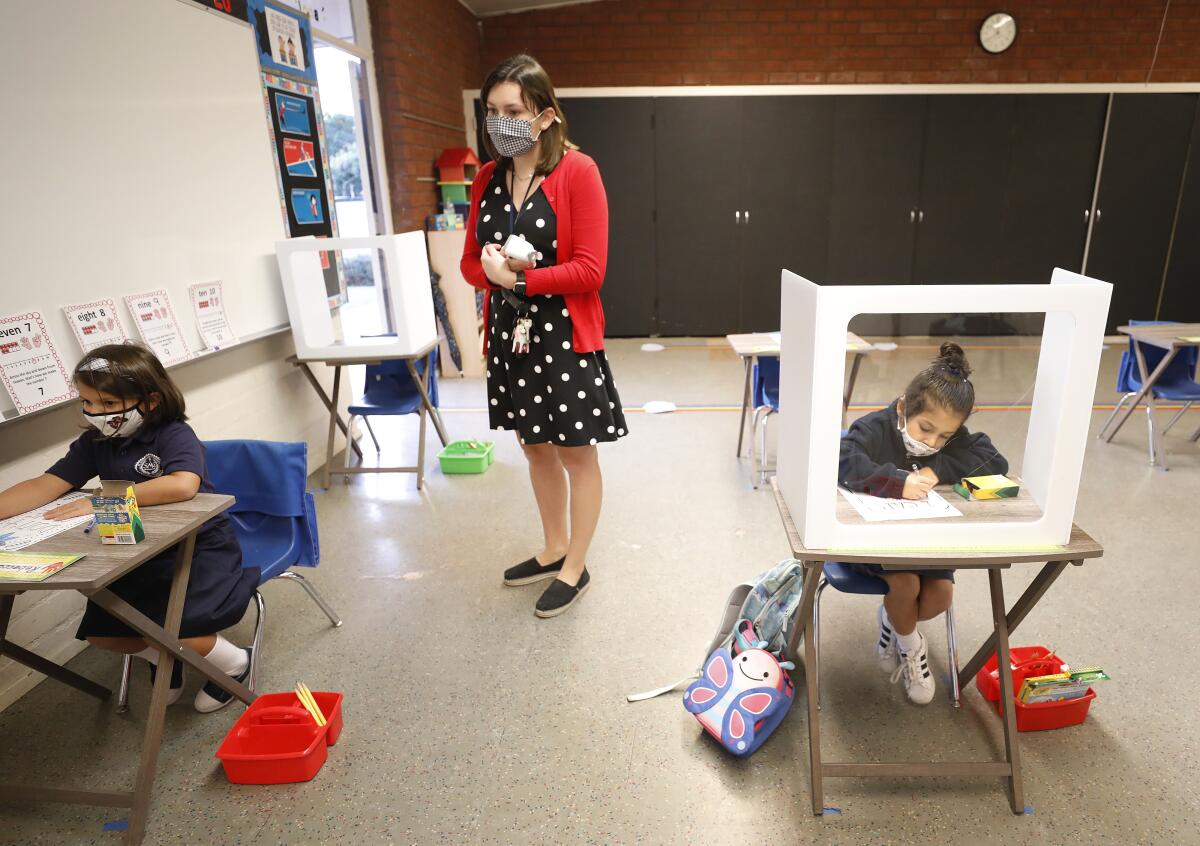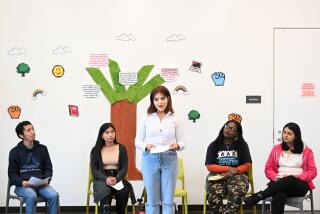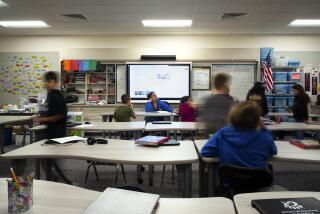Opinion: What have coronavirus lockdowns taught you about how students should learn?

My 5-year-old granddaughter finds kindergarten frustrating. Of course, she has no idea what real kindergarten is like, and at this point, even her memories of preschool are dim. No doubt, remote learning is part of the problem, even for a little girl with two educated parents who have been lucky enough to work from home. But the bigger turnoff has been the amount of time spent on rote learning, on worksheets that require printing letters and short words over and over, with her as-yet-undeveloped pincer muscles, and reciting a sentence repeatedly because it has a word that begins with the letter “N.”
It’s 90 minutes of teacher time per day at this arts-oriented charter school on the central coast of California, followed by an hour or more of parents overseeing the dreaded worksheets. My daughter and I text about the latest learning hurdles and creative ways to overcome them. Would writing the word “and” 20 times feel less painful if my granddaughter placed stickers between the words, making up a silly story to go with them? My son-in-law deploys her favorite creatures ― unicorns and bunnies ― and different-colored markers to make addition practice at least a little interesting.
School has been on my mind a lot lately, as we watch the struggles of students at home, especially low-income students of color who don’t have reliable WiFi or still await a school-issued computer. They are the ones whose parents can’t buy multi-colored markers to make school more interesting and don’t have the time to make up games.
But the truth is that although in-person instruction is better for more students, the struggles of remote learning are only part of the problem. What the pandemic has laid bare, along with the huge gaps between those who have more than enough and those who wonder whether they’ll be homeless in a few months, is the threadbare spots in curriculum and instruction. The bigger issue is how we engage kids in learning, whether it’s in the classroom or via electronic highways. I’m surprised to see ― and hear, from so many parents ― how big a part rote worksheets still play in early schoolwork, and how much of later schoolwork involves reading books and articles that have little meaning to students.
From college professors, I hear about students who still don’t know how to write more than a five-paragraph essay, if that much; business students who can’t figure percentages; and undergraduates planning to become English teachers who don’t know what a novel is.
As a society, we haven’t dealt with the learning challenges that schools were never meant to fix: The absenteeism rates from unaddressed dental and vision problems. The lack of wholesome food. The anxiety about expensive housing and lost or underpaying jobs.
The pandemic gives us a chance to rethink, in much bigger ways, what schooling should look like in the future. That’s my plan for a future editorial ― rethinking education in fundamental ways. Are students better off learning through projects than through worksheets and exams, should they have more voice in what they are learning, and would exposure to the workplace make their lessons more meaningful? How can we remake curriculum and instruction in ways that allow bright kids of all backgrounds to soar?
Should we even have actual grades — first grade, fourth grade and so forth ― or should students move forward at their own pace in each subject? If we want to teach them civics ― I do ― what can we scrape out of the existing curriculum to make way for that as well as computer science, arts courses and the like? Is there simply too much repetition of such topics as the American Revolution?
Now that we have equipped most students with the computers they need to connect to school, how can we use that capacity to improve learning? Perhaps we could have students continue learning at home to the extent that helps them, while reducing class sizes on campus. Maybe high-quality, packaged online courses will do the trick for some academic subjects, allowing teachers more time and freedom with courses that call for more interaction.
These kinds of educational decisions are in the hands of people who have terrific expertise but who aren’t on the ground, living the experience the way students, teachers and parents do. We supposedly overhauled a fair amount of curriculum with the Common Core standards, but it hasn’t proved to be any kind of magic formula to newly engaged and excited learning.
I’m looking for your ideas to help inform this editorial on truly rethinking public education in our state. Not all ideas will be used, but they all will be read and considered. Pass this on to friends and acquaintances who might have something to say. And please email me at [email protected] about this or any other school-related concerns you have. If you’re willing to be interviewed, please include a phone number. And if you don’t want your name published, please let me know that, too.
More to Read
A cure for the common opinion
Get thought-provoking perspectives with our weekly newsletter.
You may occasionally receive promotional content from the Los Angeles Times.











